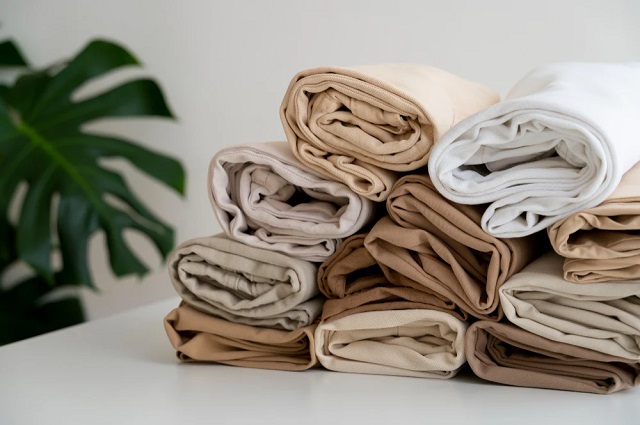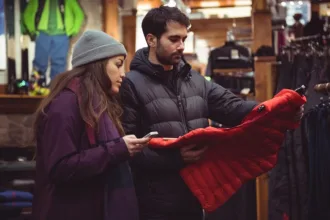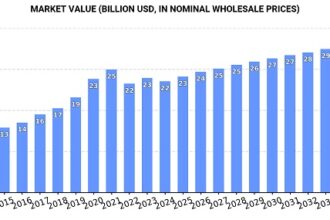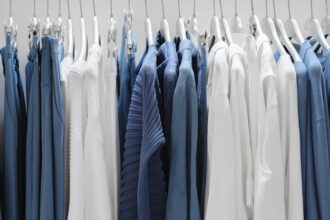When the global textile industry speaks about sustainability, cellulose fibres seldom make headlines. Yet these fibres, rooted in nature and refined by science, are quietly transforming the industry from within.
Cellulose fibres, whether natural or man-made, have become a cornerstone of the fashion world’s transition towards sustainability. Offering comfort, performance, and environmental responsibility, they meet the growing demand from brands and consumers for solutions that align with climate goals without compromising on quality.
What Are Cellulose Fibres?
Cellulose fibres are derived from plant-based sources. Natural examples include cotton, flax (linen), hemp, and jute, while man-made cellulose fibres (MMC) such as viscose, modal, lyocell, and cupro are regenerated from wood pulp through technological processes. They are renewable, biodegradable, breathable, and soft — offering both environmental benefits and superior wearing comfort.
Why Are They Relevant Today?
In the race to decarbonise fashion, cellulose fibres offer solutions to some of the industry’s most pressing challenges: reducing reliance on fossil fuels, eliminating microplastic pollution, and creating textiles with end-of-life solutions built in. They perform well across categories, from luxury to basics, from denim to sportswear.
Brands are increasingly turning to cellulose fibres not just for sustainability credentials, but because these fibres deliver on consumer expectations for softness, breathability, moisture management, and versatility.
Industry Innovations
The cellulose sector is seeing continuous innovation. While viscose remains a significant fibre in mass-market production, concerns over traditional viscose production methods have accelerated investments in cleaner alternatives. Modal offers enhanced softness and durability, while lyocell — particularly Lenzing’s TENCEL™ — leads the market in sustainable credentials through closed-loop systems that reuse 99% of solvents and significantly reduce water use.
The next wave of innovation includes textile-to-textile recycling, agricultural waste feedstocks, and new cellulose technologies offering lower-impact and circular solutions.
Brands Leading the Way
H&M’s Conscious Collection consistently features TENCEL™ Lyocell and LENZING™ ECOVERO™ viscose, used for dresses, loungewear, and everyday basics.
Zara integrates lyocell into its mainstream collections and has been part of textile-to-textile recycling initiatives with Circ.
Levi’s Water<Less® jeans incorporate TENCEL™ Lyocell to enhance softness and reduce environmental impact through both fibre use and water-saving finishing processes.
Lyocell features in this collaboration’s performance apparel, aligning with Adidas’s sustainability ambitions.
Arket’s collections include TENCEL™ Lyocell and Modal, offering transparency on fibre sourcing and highlighting responsible materials in minimalist designs.
Eileen Fisher, COS, Patagonia
These brands prioritise cellulose fibres across collections, recognising their alignment with sustainability values and consumer expectations.
Stella McCartney, Mara Hoffman
Luxury brands are also embracing lyocell and other cellulose fibres for their eco-profile and premium fabric qualities.
New Developments
- Circ x Birla Cellulose are developing scalable solutions for textile-to-textile recycling, creating lyocell from post-consumer waste. Birla has committed to purchasing this recycled pulp to produce commercial lyocell fibre.
- TreeToTextile, supported by H&M, IKEA, and Stora Enso, offers a low-impact alternative to conventional viscose through innovative fibre production processes.
- Bylon® transforms agricultural residues into bio-based fibres, combining natural origins with high performance.
These innovations address key industry priorities: resource efficiency, circularity, and reduced environmental impact.
Benefits at a Glance
| Attribute | Cellulose Fibre Advantage |
| Renewable | Plant-based, fast-regenerating |
| Biodegradable | Breaks down naturally, no microplastics |
| Circularity | Supports recycling, closed-loop systems |
| Performance | Breathable, soft, moisture-wicking |
| Versatile | Suitable for luxury, activewear, basics |
Challenges
Despite significant advancements in sustainable innovation, the production of cellulose fibres still faces several challenges. Conventional viscose, one of the most common types of cellulose fibre, continues to be criticised for its intensive use of chemicals and water. Ensuring the responsible and traceable sourcing of wood pulp—the raw material for most cellulose fibres—is essential to prevent deforestation and environmental degradation. Additionally, while waste-to-fibre technologies offer exciting potential for circularity in cellulose fibre production, scaling these solutions will require increased investment, technological development, and industry-wide collaboration.
The Outlook
The cellulose fibre segment is set for continued growth. Industry analysts forecast strong double-digit growth in lyocell capacity through 2033, driven by demand for responsible alternatives to synthetics. Global market size is projected to reach USD 74.2 billion by 2033, with a CAGR of 6.3% from 2024 to 2033, according to Vision Research Reports. According to the report:
- Asia Pacific dominated the global market with the largest market share of 39% in 2023.
- By Product, the synthetic products registered the maximum market share of 63% in 2023.
- By Application, the regarding applications contributed the largest market share in 2023.
- By Application, the industrial segment is estimated to expand the fastest CAGR over the forecast period.
Advancements in recycling technologies and sustainable sourcing are reinforcing cellulose fibres’ position as a key material in the industry’s sustainable transformation. Major brands are embedding these fibres into their long-term sourcing strategies, aligning with consumer demand and regulatory pressures for transparency and circularity.
Conclusion
In the evolving landscape of sustainable fashion, cellulose fibres are no longer a quiet player on the sidelines. They are firmly established as a material of choice for brands prioritising sustainability, quality, and performance. While others chase the next innovation headline, cellulose fibres continue to power the shift towards a more responsible industry — quietly, reliably, and effectively.











